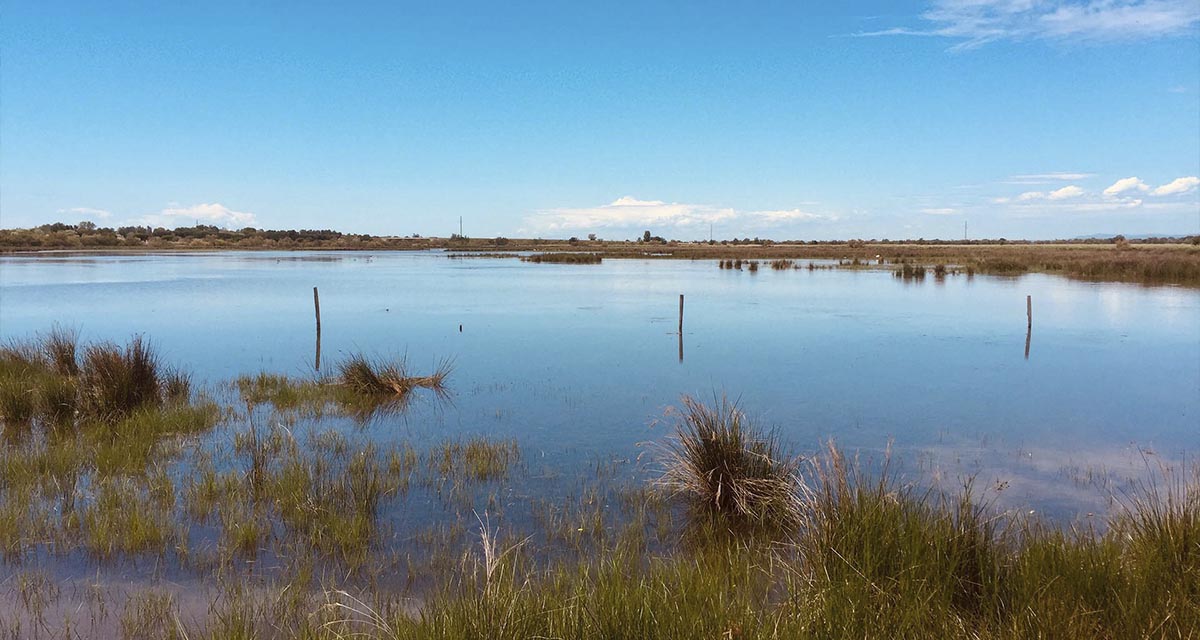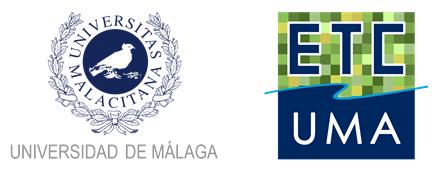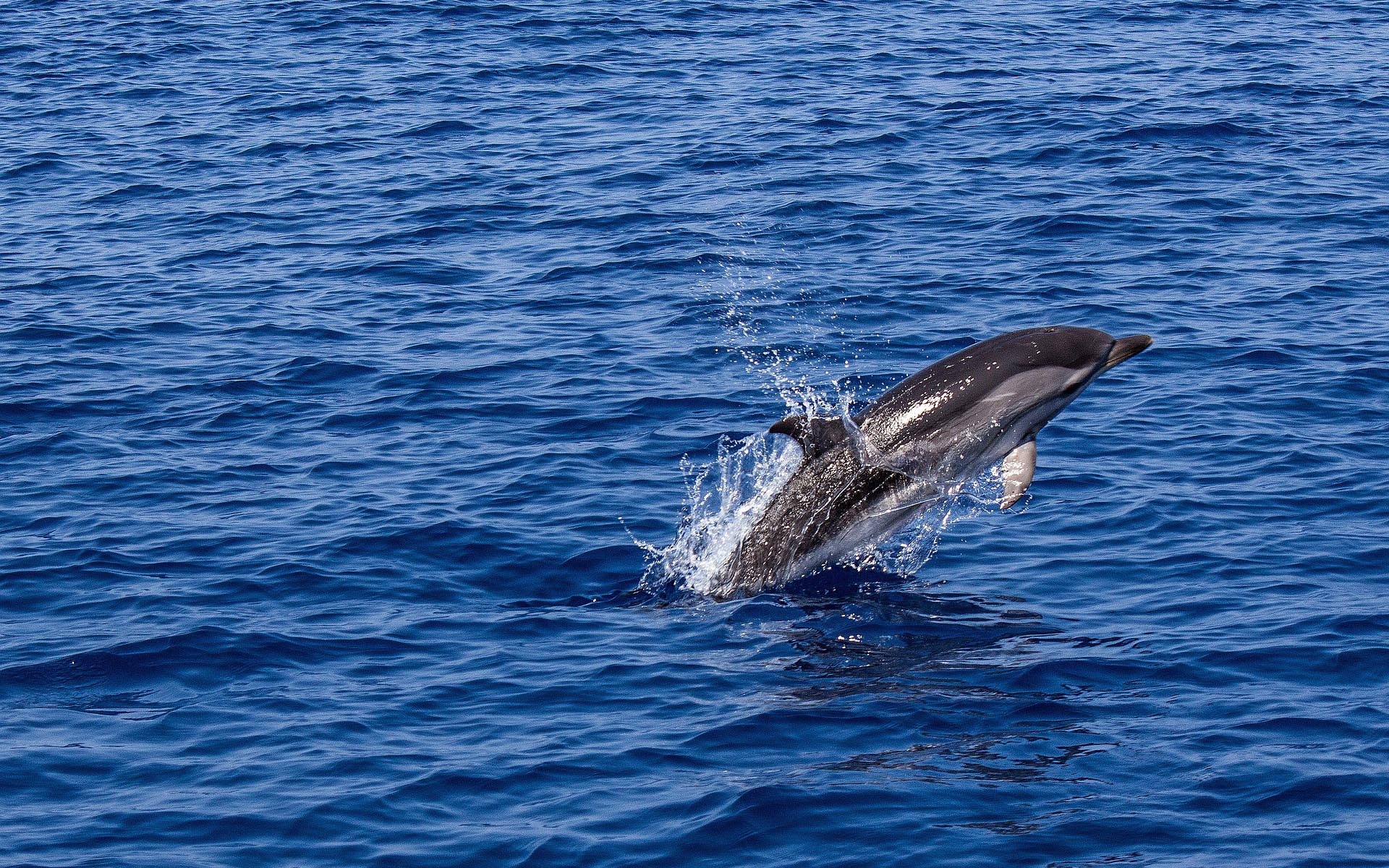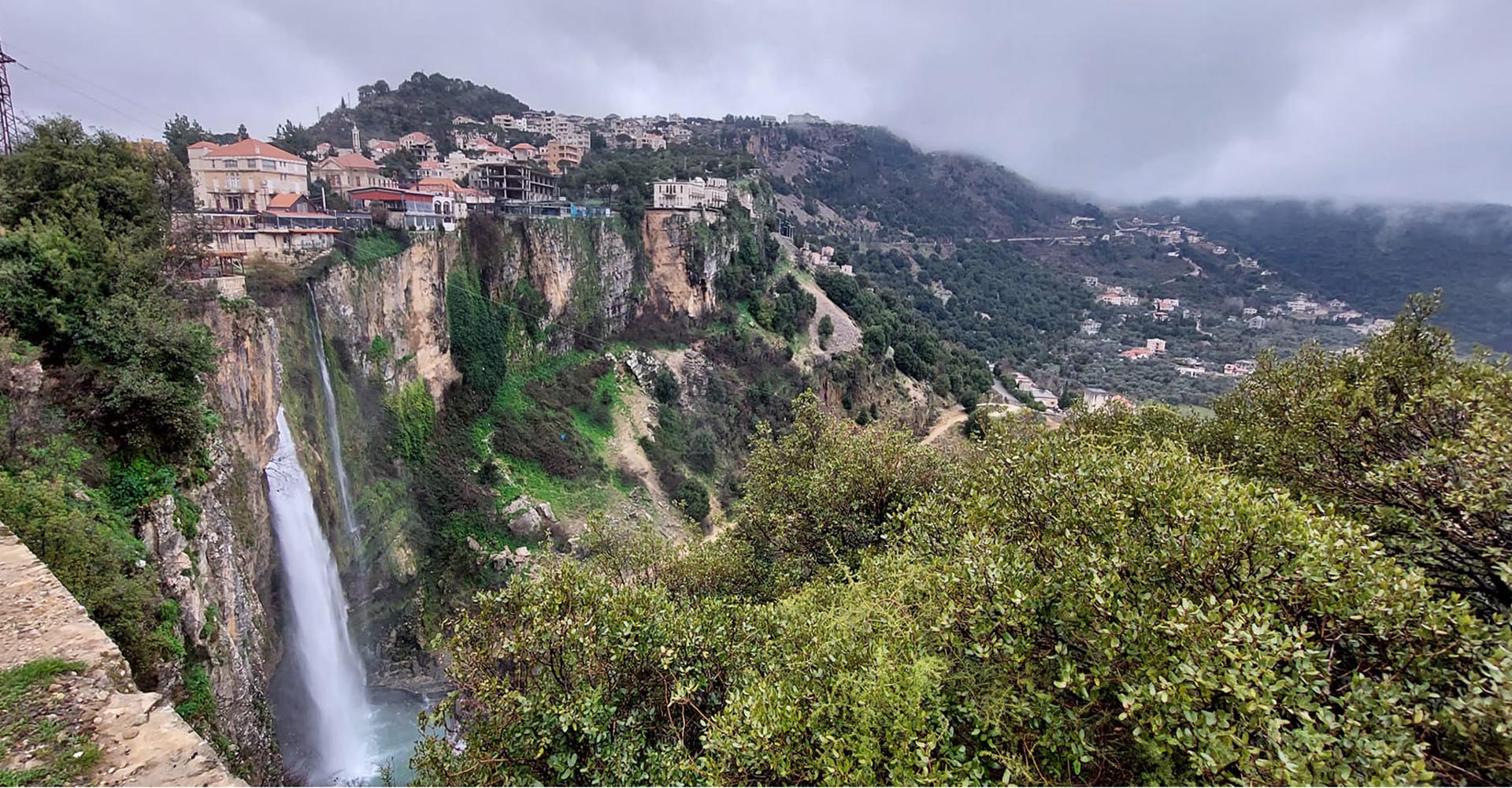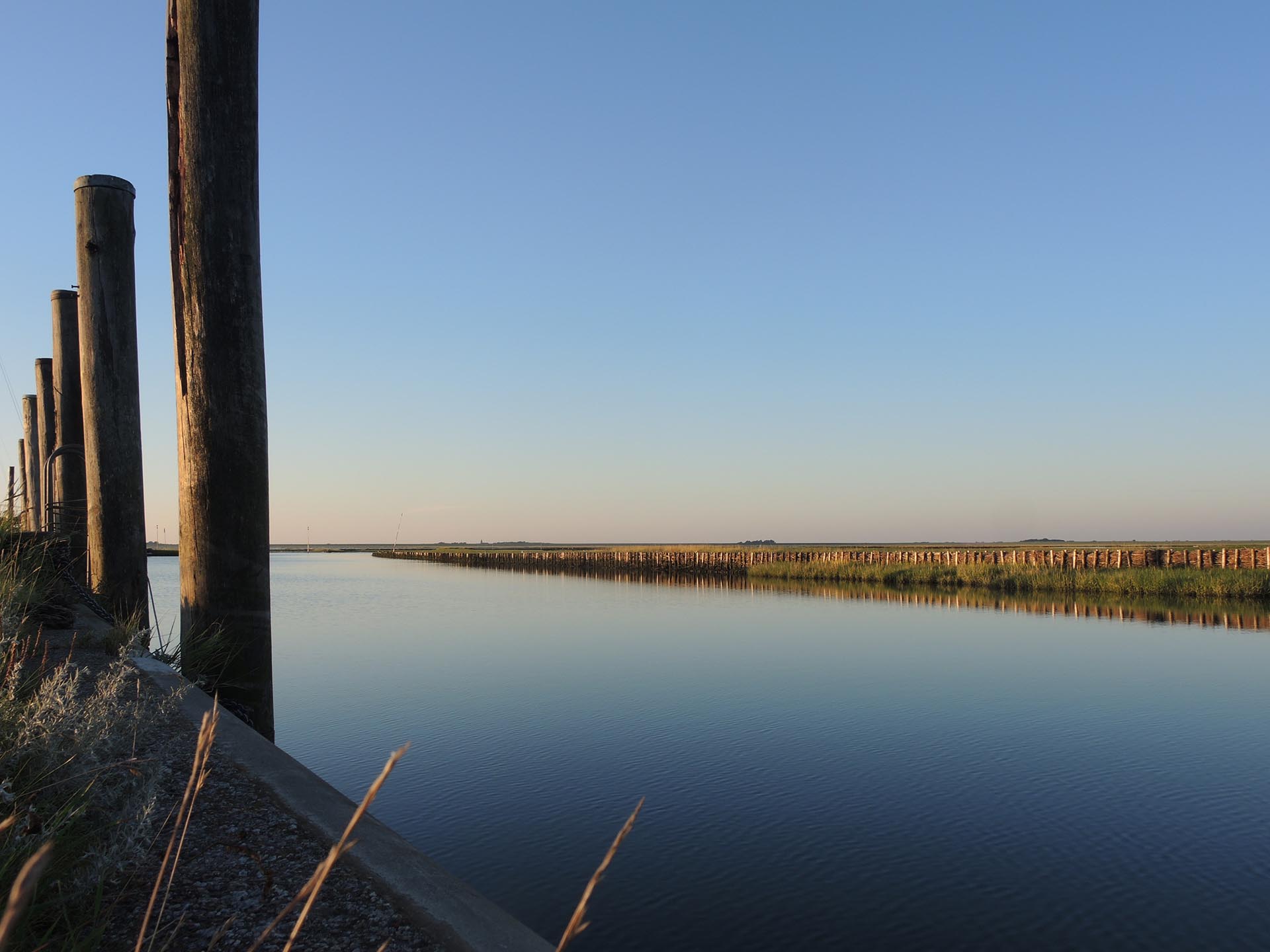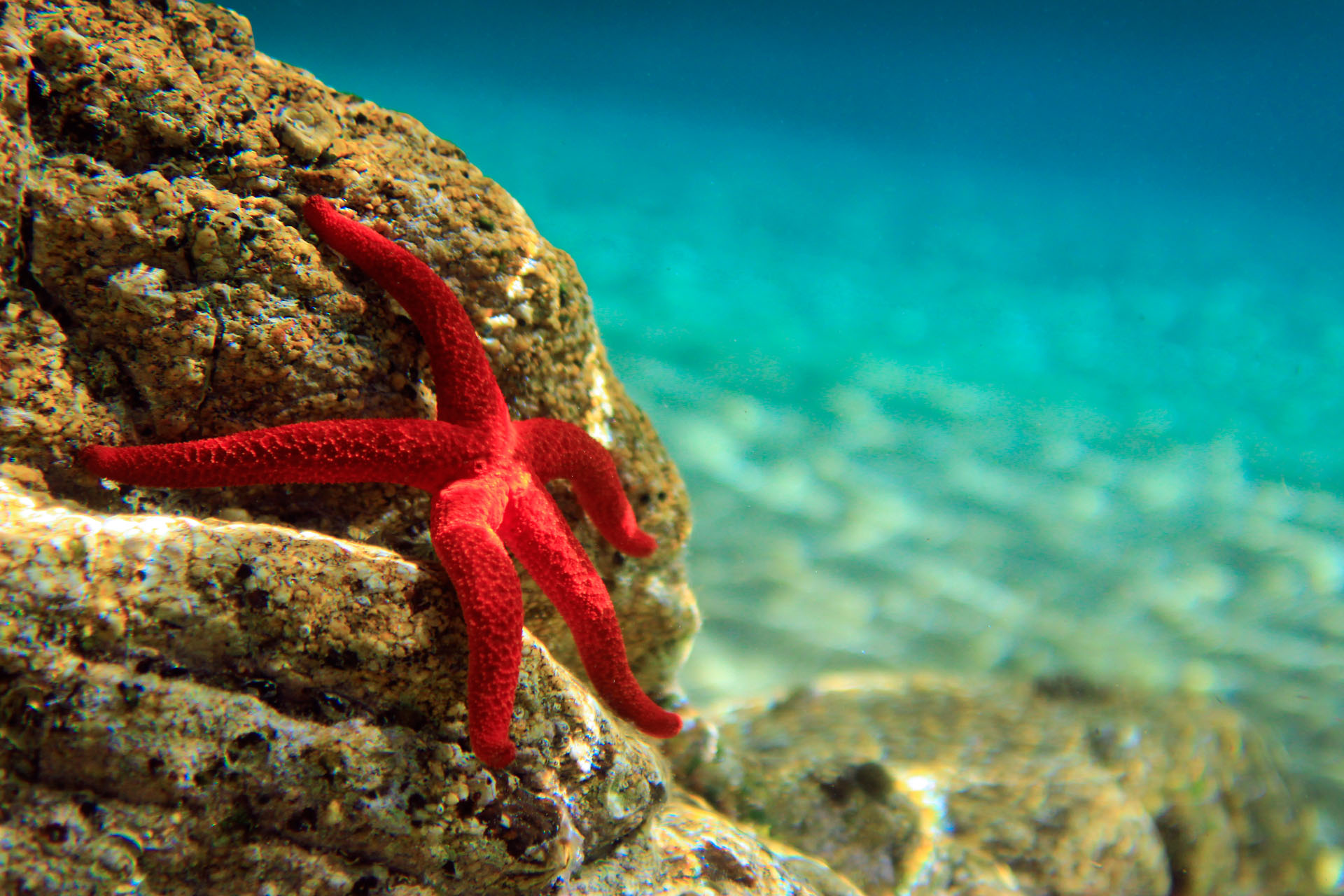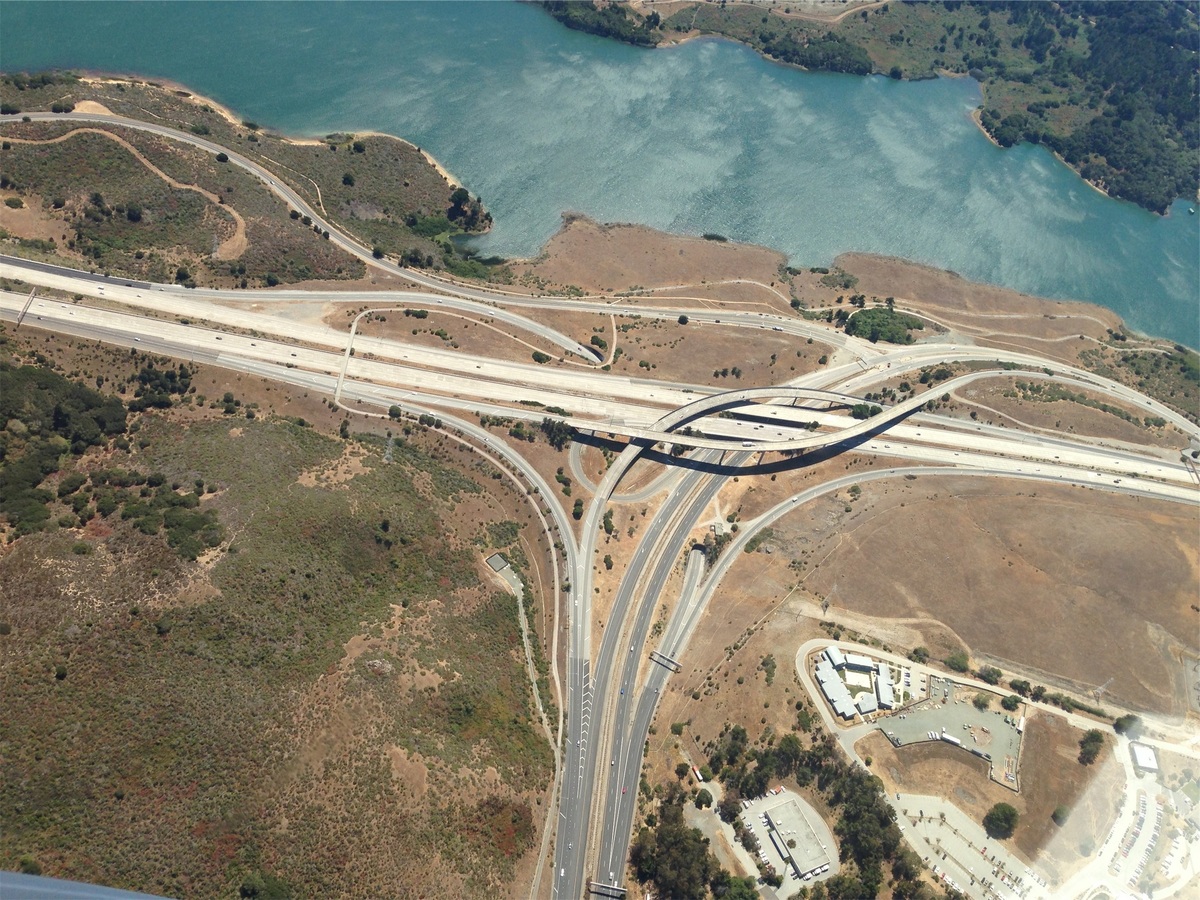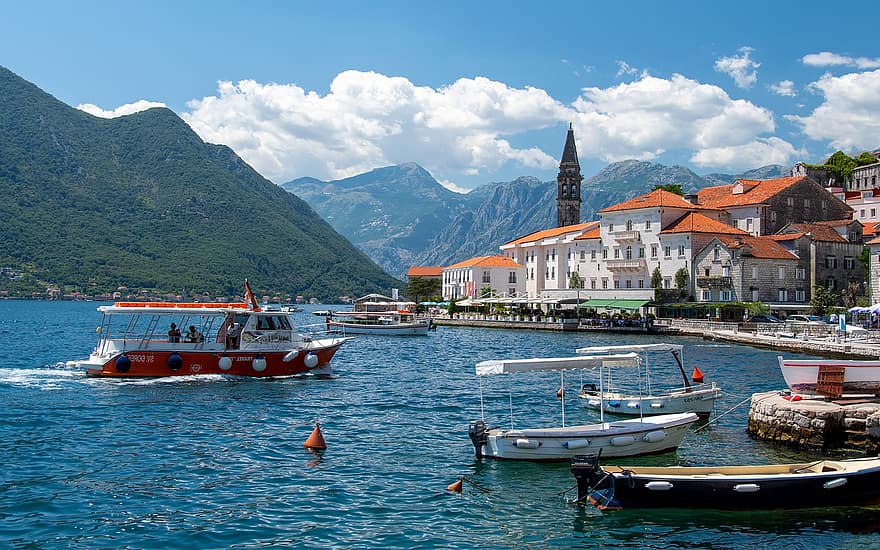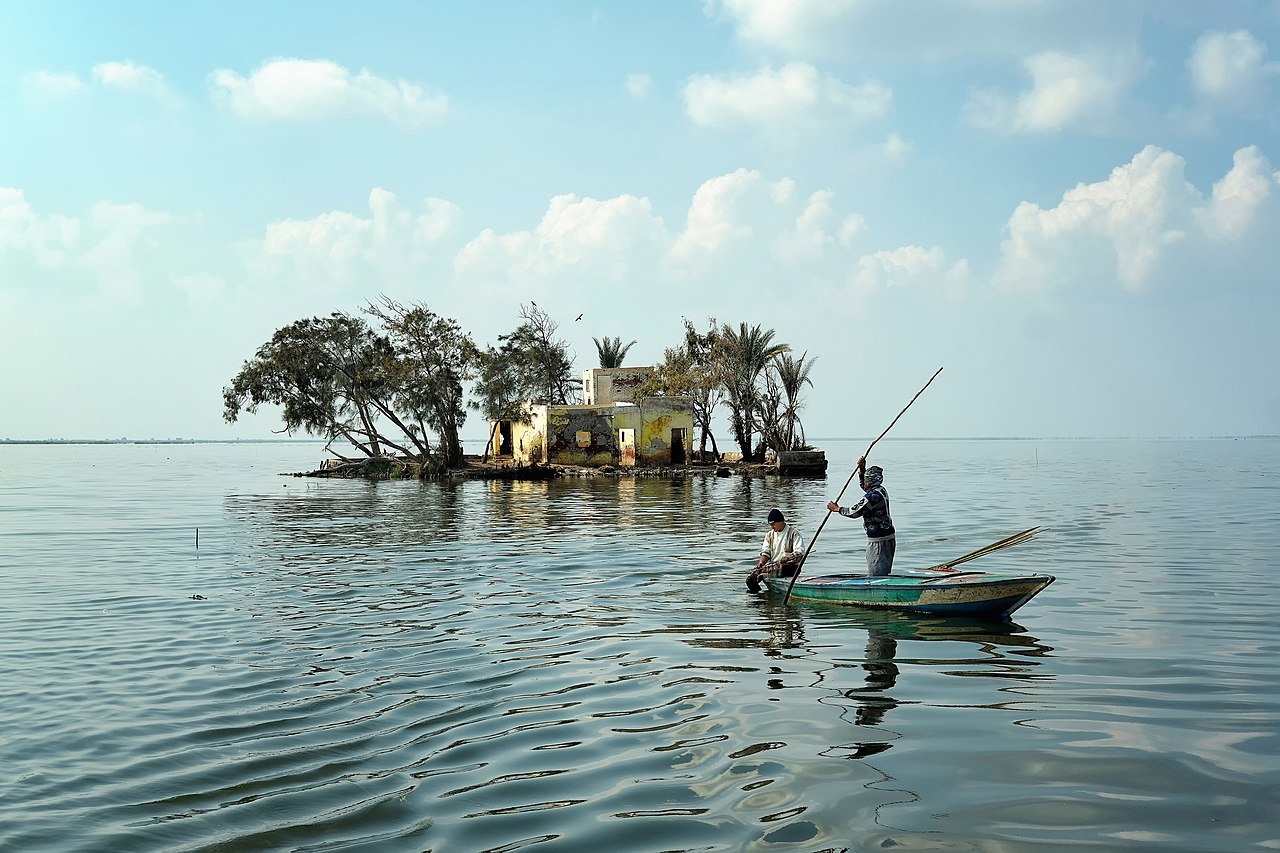European topic centre - university of malaga
Meet our team members

Dania Abdul Malak
ETC-UMA DIRECTOR
daniaabdulmalak@uma.es
+34 951 952 995
Dania Abdul Malak is a senior environmental researcher and Director of the European Topic Centre at the University of Malaga (ETC-UMA). She has over 15 years’ experience in environmental assessment and management. Her research focuses on setting transferable guidelines to apply ecosystem-based management to nature conservation and biodiversity protection at regional scales, including the Mediterranean and Europe. Her work supports the evidence behind the implementation of different Global, European and Mediterranean Directives such as the EU MSFD, the EU MSP, the EU Habitat Directive, the EU Biodiversity Strategy to 2020, the Barcelona Convention for the Protection of the Coastal and Marine Environment in the Mediterranean, as well as the Ramsar and the Carpathian Conventions.
Dania supports the European Environment Agency (EEA) by developing integrated ecosystem assessment frameworks to evaluate the functional capacity of ecosystems to provide ecosystem services. Furthermore, she coordinates several regional initiatives and participates in numerous international research projects related to her field of expertise. More recently, Dania is supporting the United Nations Economic and Social Commission for Western Asia (UNESCWA) in implementing sustainable Development Strategies in Western Asian countries.
She has written several scientific papers and has co-authored many international and regional technical reports and books, namely Adapting to Climate Change- an assessment of Vulnerability and risks to Human Security in the Western Mediterranean basin (Abdul Malak et al., 2017); the European forest ecosystems report (EEA, 2016); European ecosystem assessment – concept, data, and implementation (EEA, 2015), Monitoring Post-fire EVI regeneration in the Eastern Iberian Peninsula using GIS and Remote Sensing in International Journal of Applied Geospatial Research (2016) among others. More on publications are available in the ETC-UMA´s publication section.
RESOURCES
Journal Articles
Rodríguez-Rodríguez, D.; Sánchez-Espinosa, A.; Abdul-Malak, D.
Potential contribution of OECMs to international area-based conservation targets in a biodiversity rich country, Spain Journal Article
In: Journal for Nature Conservation, vol. 62, 2021.
Abstract | Links | BibTeX | Tags: Biodiversity, Conservation and management, Ecosystem, Environmental conservation, Marine protected areas, Protected areas
@article{Rodríguez-Rodríguez2021b,
title = {Potential contribution of OECMs to international area-based conservation targets in a biodiversity rich country, Spain},
author = {D. Rodríguez-Rodríguez and A. Sánchez-Espinosa and D. Abdul-Malak},
url = {https://doi.org/10.1016/j.jnc.2021.126019},
doi = {10.1016/j.jnc.2021.126019},
year = {2021},
date = {2021-05-15},
journal = {Journal for Nature Conservation},
volume = {62},
abstract = {Other effective area-based conservation measures (OECMs) are new conservation tools intended to complement protected areas (PAs) at achieving effective biodiversity conservation and meeting international area-based targets. However, OECMs have been rarely considered in practical terms until recently. Here, we performed a rapid evaluation on the degree of fulfilment of current area-based international biodiversity targets, post-2020 foreseeable oncoming targets, and ecological targets by considering: 1) Protection coverage; 2) Inclusiveness of important areas for biodiversity; 3) Protection management; 4) Connectivity; and 5) Habitat representation, on land and at sea in Spain, a Euro-Mediterranean, biodiversity rich country. We conducted the evaluation under two scenarios: 1) Scenario 1 considers designated PAs; and 2) Scenario 2, that also includes potential OECMs. In order to generate Scenario 2, thirteen legal categories were assessed against international guidance on OECMs as a first step to screen their likelihood of providing OECMs in Spain. Our findings show that some potentially satisfactory OECM categories such as Public Utility Forests, River Reserves or Geoparks meet the OECM criteria to a large degree and deserve further study. Our results also highlight that Spain is currently well above most foreseeable post-2020 biodiversity targets and even close to some ecological targets using just PAs, except for marine protected area (MPA) management and MPA offshore coverage. Adding OECMs would noticeably improve the country’s figures yet without reaching many exigent ecological targets. OECMs can become a useful, cost-effective biodiversity conservation tool that contributes to international targets under new, more ambitious area-based conservation requirements in Spain and elsewhere. Nevertheless, for this to happen, suitable biodiversity management and monitoring schemes must be ensured.},
keywords = {Biodiversity, Conservation and management, Ecosystem, Environmental conservation, Marine protected areas, Protected areas},
pubstate = {published},
tppubtype = {article}
}
Merkohasanaj, M.; Rodríguez-Rodríguez, D.; García-Martínez, M. C.; Vargas-Yáñez, M.; Abdul-Malak, D.
Assessing the environmental effectiveness of the Spanish Marine Reserve Network using remote sensing Journal Article
In: Ecological Indicators, vol. 107, 2019.
Abstract | Links | BibTeX | Tags: Conservation and management, Marine protected areas, Protected areas, SOSTPARK
@article{Merkohasanaj2019,
title = {Assessing the environmental effectiveness of the Spanish Marine Reserve Network using remote sensing},
author = {M. Merkohasanaj and D. Rodríguez-Rodríguez and M.C. García-Martínez and M. Vargas-Yáñez and D. Abdul-Malak},
url = {https://www.sciencedirect.com/science/article/pii/S1470160X19305758},
doi = {10.1016/j.ecolind.2019.105583},
year = {2019},
date = {2019-12-01},
journal = {Ecological Indicators},
volume = {107},
abstract = {Healthy marine ecosystems provide a variety of ecosystem services crucial for human wellbeing. Effectively managed Marine Protected Areas (MPAs) are increasingly recognized to be an effective measure to protect endangered species and ensuring healthier ecosystems. This study assesses the environmental effectiveness of the Spanish Marine Reserve Network (MRN) with regard to: 1) water quality: chlorophyll-a concentrations (Chl-a), sea surface temperature (SST), and Salinity; and 2) protected species conservation: coverage and density of Posidonia oceanica (P. oceanica), using a Multiple-Paired-Before-After-Control-Impact (MPBACI) research design. Water quality and protected species indicators were compared before and after Marine Reserve (MR) designation, inside MRs and in different outer control areas of 1 km, 5 km, 10 km and equal-area buffers, for the whole MRN (Marine Reserve Network), by marine ecoregions and for some specific MRs. We used Copernicus Marine Monitoring Remote Sensing data to ascertain water quality values and validated their accuracy compared to in-situ data as well as the reliability of Chl-a concentration derived from Sentinel 2 (S2) images. Water quality results reveal significant differences in mean Chl-a and Chl-a range, mean Salinity and SST range between cases (inside MRs) and 5 km-buffer control areas for the entire MRN. Analyses by ecoregion showed no significant differences in water quality between cases and controls in the Western Mediterranean ecoregion or in the Azores, Canaries and Madeira ecoregion, whereas the Alboran Sea ecoregion MRs had higher mean Chl-a concentration and lower mean Salinity, mean SST and SST range than all controls. Results on P. oceanica beds showed a significant increase in P. oceanica density (almost twice) inside Tabarca MR (TBA) compared to outer control cases, but no significant changes in P. oceanica coverage. Validation of Remote Sensing (RS) data using in-situ measurements demonstrated significant differences for Chl-a concentration and no significant differences for SST and Salinity between both techniques. Chl-a concentration by S2 reveals statistically significant differences with in-situ data. Our findings suggest environmental effectiveness of the Spanish MRs and still limited sensitivity of open source medium resolution RS tools to assess MPA effectiveness.},
keywords = {Conservation and management, Marine protected areas, Protected areas, SOSTPARK},
pubstate = {published},
tppubtype = {article}
}
Rodríguez-Rodríguez, D.; Rodríguez, J.; Blanco, J María; Abdul-Malak, D.
Marine protected area design patterns in the Mediterranean Sea: Implications for conservation Journal Article
In: Marine Pollution Bulletin , vol. 110, no. 1, 2016.
Abstract | Links | BibTeX | Tags: Conservation and management, Marine protected areas, Mediterranean sea, Protected areas
@article{Rodríguez-Rodríguez2016,
title = {Marine protected area design patterns in the Mediterranean Sea: Implications for conservation},
author = {D. Rodríguez-Rodríguez and J. Rodríguez and J María Blanco and D. Abdul-Malak},
url = {https://www.researchgate.net/publication/304896823_Marine_protected_area_design_patterns_in_the_Mediterranean_Sea_Implications_for_conservation},
doi = {10.1016/j.marpolbul.2016.06.044},
year = {2016},
date = {2016-10-01},
journal = {Marine Pollution Bulletin },
volume = {110},
number = {1},
abstract = {Mediterranean marine protected area (MPA) design patterns regarding geographic distribution, size, spacing and shape were analysed as a proxy of the region's MPA's ecological effectiveness and a first step towards an ecologically coherent MPA network. Results for legally designated MPAs and ecologically functional MPAs accounting for overlaps are presented. Geographically, Mediterranean MPA area is very unevenly distributed, with four-fifths concentrated in just three countries of the north-western part of the basin. Average distance between functional MPAs lies within recommended ecological thresholds, which suggests adequate potential connectivity of the Mediterranean MPA system. Mediterranean designated MPAs are larger than MPAs worldwide on average, although they are generally smaller than international guidance suggests at different levels: ecoregion, country and designation category. On average, Mediterranean designated and functional MPAs have relatively high compactness, which makes them prone to spillover and adequate viability, and less vulnerable to edge effects.},
keywords = {Conservation and management, Marine protected areas, Mediterranean sea, Protected areas},
pubstate = {published},
tppubtype = {article}
}
Rodriguez-Rodriguez, D.; J. Rodriguez,; Abdul-Malak, D.
In: Journal of Environmental Management, vol. 167, pp. 29-37, 2016.
Abstract | Links | BibTeX | Tags: Conservation and management, Marine protected areas, Mediterranean sea, Protected areas
@article{Rodriguez-Rodriguez2016b,
title = {Development and testing of a new framework for rapidly assessing legal and managerial protection afforded by marine protected areas: Mediterranean Sea case study},
author = {D. Rodriguez-Rodriguez and J. Rodriguez, and D. Abdul-Malak},
url = {https://www.researchgate.net/publication/284358773_Development_and_testing_of_a_new_framework_for_rapidly_assessing_legal_and_managerial_protection_afforded_by_marine_protected_areas_Mediterranean_Sea_case_study},
doi = {10.1016/j.jenvman.2015.11.016},
year = {2016},
date = {2016-02-01},
journal = {Journal of Environmental Management},
volume = {167},
pages = {29-37},
abstract = {The Convention on Biological Diversity (CBD) states the need to effectively conserve at least 10% of coastal and marine areas of particular importance for biodiversity by 2020. Here, a new indicator-based methodological framework to assess biodiversity protection afforded by marine protected areas' (MPA) was developed as a quick surrogate for MPAs' potential conservation effectiveness: the Marine Protected Area Protection Assessment Framework (MaPAF). The MaPAF consists of a limited number of headline indicators that are integrated in two indexes: Legal protection and Management effort, which eventually integrate in the overall MPA Protection super-index. The MaPAF was then tested in the Mediterranean MPA network as a case study. Spatial analyses were performed at three meaningful scales: the whole Mediterranean Sea, Mediterranean ecoregions and countries. The results of this study suggest that: 1) The MaPAF can serve as a useful tool for consistent, adaptive, quick and cost-effective MPA effectiveness assessments of MPAs and MPA networks in virtually any marine region, as the headline indicators used are commonly compiled and easy to retrieve; 2) The MaPAF proved usable and potentially relevant in the Mediterranean Sea where most indicators in the framework can be publicly accessed through the MAPAMED database and are planned to be regularly updated; 3) Protection afforded by MPAs is low across the whole Mediterranean, with only few MPAs having relatively high legal and managerial protection; and 4) Most Mediterranean countries need to devote substantially more work to improve MPA effectiveness mainly through increased management effort. },
keywords = {Conservation and management, Marine protected areas, Mediterranean sea, Protected areas},
pubstate = {published},
tppubtype = {article}
}
Rodríguez-Rodríguez, D.; Rodríguez, J.; Abdul-Malak, D.; Hernandez, P.
In: Marine Policy, vol. 64, pp. 24-30, 2016.
Abstract | Links | BibTeX | Tags: Conservation and management, Marine protected areas, Mediterranean sea, Protected areas
@article{Rodríguez-Rodríguez2016c,
title = {Marine protected areas and fisheries restricted areas in the Mediterranean: Assessing "actual" marine biodiversity protection coverage at multiple scales},
author = {D. Rodríguez-Rodríguez and J. Rodríguez and D. Abdul-Malak and P. Hernandez},
url = {https://www.researchgate.net/publication/304896848_Marine_protected_areas_and_fisheries_restricted_areas_in_the_Mediterranean_Assessing_actual_marine_biodiversity_protection_coverage_at_multiple_scales},
doi = {10.1016/j.marpol.2015.11.006},
year = {2016},
date = {2016-02-01},
journal = {Marine Policy},
volume = {64},
pages = {24-30},
abstract = {This study uses a tiered approach to assessing progress towards achieving the Convention on Biological Diversity (CBD) target to increase marine protected area (MPA) coverage to 10% at different scales: the whole Mediterranean Sea, by ecoregions and by countries. It additively considers marine protection coverage by conventional MPAs (cMPAs; tier 1); unconventional MPAs (uMPAs, including international Fisheries Restricted Areas –iFRAs-; tier 2); and Other Effective Area-Based Conservation Measures (OEABCMs, including national FRAs -nFRAs; tier 3). It also discusses the appropriateness of considering tiers 2 & 3 as legal and managerial tools for sustainable marine development in national reporting against international protection coverage targets. At the Mediterranean Sea scale, by mid-2015 there were 1,077 cMPAs which covered 6.45% of its area. At the ecoregional scale, only the Western Mediterranean ecoregion exceeds the 10% coverage target. At national scale, four countries (Monaco, France, Spain and Turkey) currently exceed the 10% target for their entire hypothetical Exclusive Economic Zones (EEZs). The cMPA designations that contribute most to Mediterranean MPA coverage are Specially Protected Areas of Mediterranean Importance (SPAMIs), the Pelagos Sanctuary, Natura 2000 sites and national designations, respectively. When considering uMPAs, the amount of marine area under protection in the Mediterranean reaches 1,632,507 km2 or roughly 64.48% of the Mediterranean Sea area; all the ecoregions more than double the CBD coverage target; all countries but Malta meet the target in their inshore waters; and all countries meet the target in their whole hypothetical EEZs. Finally, nFRAs contributed 565 km2 of additional protected area and made the percentage of legally protected marine area reach 64.50% of the total Mediterranean Sea area.},
keywords = {Conservation and management, Marine protected areas, Mediterranean sea, Protected areas},
pubstate = {published},
tppubtype = {article}
}
Rodríguez-Rodríguez, D.; Rodríguez, J.; Abdul-Malak, D.; Nastasi, A.; Hernández, P.
In: Marine Policy, vol. 64, pp. 24-30, 2016.
Abstract | Links | BibTeX | Tags: Conservation and management, Marine protected areas, Mediterranean sea, Protected areas
@article{Rodríguez-Rodrígueza2016,
title = {Marine protected areas and fisheries restricted areas in the Mediterranean: assessing “actual” marine biodiversity protection coverage at multiple scales},
author = {D. Rodríguez-Rodríguez and J. Rodríguez and D. Abdul-Malak and A. Nastasi and P. Hernández},
url = {https://www.sciencedirect.com/science/article/pii/S0308597X15003255},
doi = {https://doi.org/10.1016/j.marpol.2015.11.006},
year = {2016},
date = {2016-02-01},
journal = {Marine Policy},
volume = {64},
pages = {24-30},
abstract = {This study uses a tiered approach to assessing progress towards achieving the Convention on Biological Diversity (CBD) target to increase marine protected area (MPA) coverage to 10% at different scales: the whole Mediterranean Sea, by ecoregions and by countries. It additively considers marine protection coverage by conventional MPAs (cMPAs; tier 1); unconventional MPAs (uMPAs, including international Fisheries Restricted Areas – iFRAs-; tier 2); and Other Effective Area-Based Conservation Measures (OEABCMs, including national FRAs–nFRAs; tier 3). It also discusses the appropriateness of considering tiers 2 and 3 as legal and managerial tools for sustainable marine development in national reporting against international protection coverage targets. At the Mediterranean Sea scale, by mid-2015 there were 1077 cMPAs which covered 6.45% of its area. At the ecoregional scale, only the Western Mediterranean ecoregion exceeds the 10% coverage target. At national scale, four countries (Monaco, France, Spain and Turkey) currently exceed the 10% target for their entire hypothetical Exclusive Economic Zones (EEZs). The cMPA designations that contribute most to Mediterranean MPA coverage are Specially Protected Areas of Mediterranean Importance (SPAMIs), the Pelagos Sanctuary, Natura 2000 sites and national designations, respectively. When considering uMPAs, the amount of marine area under protection in the Mediterranean reaches 1,632,507 km2 or roughly 64.48% of the Mediterranean Sea area; all the ecoregions more than double the CBD coverage target; all countries but Malta meet the target in their inshore waters; and all countries meet the target in their whole hypothetical EEZs. Finally, nFRAs contributed 565 km2 of additional protected area and made the percentage of legally protected marine area reach 64.50% of the total Mediterranean Sea area.},
keywords = {Conservation and management, Marine protected areas, Mediterranean sea, Protected areas},
pubstate = {published},
tppubtype = {article}
}
Rodríguez-Rodríguez, D.; Rodríguez, J.; Abdul-Malak, D.
In: Journal of Environmental Management, vol. 167, pp. 29-37, 2016.
Abstract | Links | BibTeX | Tags: Conservation and management, Marine protected areas, Mediterranean sea, Protected areas
@article{Rodríguez-Rodríguez2016e,
title = {Development and testing of a new framework for rapidly assessing legal and managerial protection afforded by marine protected areas: Mediterranean Sea case study},
author = {D. Rodríguez-Rodríguez and J. Rodríguez and D. Abdul-Malak},
url = {https://www.sciencedirect.com/science/article/pii/S0301479715303704},
doi = {https://doi.org/10.1016/j.jenvman.2015.11.016},
year = {2016},
date = {2016-02-01},
journal = {Journal of Environmental Management},
volume = {167},
pages = {29-37},
abstract = {The Convention on Biological Diversity (CBD) states the need to effectively conserve at least 10% of coastal and marine areas of particular importance for biodiversity by 2020. Here, a new indicator-based methodological framework to assess biodiversity protection afforded by marine protected areas' (MPA) was developed as a quick surrogate for MPAs' potential conservation effectiveness: the Marine Protected Area Protection Assessment Framework (MaPAF). The MaPAF consists of a limited number of headline indicators that are integrated in two indexes: Legal protection and Management effort, which eventually integrate in the overall MPA Protection super-index. The MaPAF was then tested in the Mediterranean MPA network as a case study. Spatial analyses were performed at three meaningful scales: the whole Mediterranean Sea, Mediterranean ecoregions and countries. The results of this study suggest that: 1) The MaPAF can serve as a useful tool for consistent, adaptive, quick and cost-effective MPA effectiveness assessments of MPAs and MPA networks in virtually any marine region, as the headline indicators used are commonly compiled and easy to retrieve; 2) The MaPAF proved usable and potentially relevant in the Mediterranean Sea where most indicators in the framework can be publicly accessed through the MAPAMED database and are planned to be regularly updated; 3) Protection afforded by MPAs is low across the whole Mediterranean, with only few MPAs having relatively high legal and managerial protection; and 4) Most Mediterranean countries need to devote substantially more work to improve MPA effectiveness mainly through increased management effort.},
keywords = {Conservation and management, Marine protected areas, Mediterranean sea, Protected areas},
pubstate = {published},
tppubtype = {article}
}
Rodríguez-Rodríguez, D.; Sánchez-Espinosa, A.; Schröder, C.; Abdul-Malak, D.; Rodríguez, J.
Cumulative pressures and low protection: a concerning blend for Mediterranean MPAs Journal Article
In: Marine Pollution Bulletin, vol. 101, pp. 288-295, 2015.
Abstract | Links | BibTeX | Tags: Climate Change, Marine protected areas, Mediterranean sea, Pressures
@article{Rodríguez-Rodrígueza2015,
title = {Cumulative pressures and low protection: a concerning blend for Mediterranean MPAs},
author = {D. Rodríguez-Rodríguez and A. Sánchez-Espinosa and C. Schröder and D. Abdul-Malak and J. Rodríguez},
url = {https://www.sciencedirect.com/science/article/pii/S0025326X15300540},
doi = {https://doi.org/10.1016/j.marpolbul.2015.09.039},
year = {2015},
date = {2015-12-01},
journal = {Marine Pollution Bulletin},
volume = {101},
pages = {288-295},
abstract = {This study classifies Mediterranean marine protected areas (MPAs) according to the combined result of pressure level and protection. Six major marine environment pressures were considered: pressures from fish farms, fishing, marine litter, pressures from marinas, pollution from maritime transport, and climate change. MPA protection was assessed through legal protection and management effort. Most MPA area in the Mediterranean is under relatively high pressure level and afforded low protection. Inshore areas show higher pressure levels. Five marine ecoregions, nine countries and nineteen MPA designation categories have over 50% of their MPA area under major concern. The mean number of cumulative pressures occurring in priority MPAs ranges between three and four, although the mean combined intensity of those pressures is low. However, these figures are most likely underestimated, especially for the southern Mediterranean. The most concerning pressures to MPAs regarding extent and intensity were: climate change, fishing and pollution from maritime transport.},
keywords = {Climate Change, Marine protected areas, Mediterranean sea, Pressures},
pubstate = {published},
tppubtype = {article}
}
Technical Reports
Fortuna, C.; Sánchez-Espinosa, A.; Rodríguez-Rodríguez, D.; Abdul-Malak, D.; Podestà, M.; Panigada, S.
2022.
Abstract | Links | BibTeX | Tags: Biodiversity, Conservation and management, Environmental conservation, Marine protected areas, Maritime transport, Mediterranean sea
@techreport{Fortuna2022,
title = {Pathways to coexistence between large cetaceans and maritime transport in the north-western Mediterranean region: Collision risk between ships and whales within the proposed north-western Mediterranean PSSA, including the Pelagos Sanctuary},
author = {C. Fortuna and A. Sánchez-Espinosa and D. Rodríguez-Rodríguez and D. Abdul-Malak and M. Podestà and S. Panigada},
url = {https://panaceaweb.adabyron.uma.es/wp-content/uploads/Pathways-to-coexistence-between-large-cetaceans-and-maritime-transport-in-the-north-western-Mediterranean-region.pdf},
year = {2022},
date = {2022-11-18},
urldate = {2022-11-18},
abstract = {This short report is the result of a collaborative effort among researchers from ISPRA in Italy and ETC-UMA in Spain supported by Mediterranean institutions partnering in the MBPC project. The level of maritime traffic and the intricacy of the network of shipping routes within the Pelagos Sanctuary and the new proposed north western Mediterranean Particularly Sensitive Sea Area (PSSA is an area that needs special protection through action by International Maritime Organization (IMO) because of its significance for recognized ecological or socio-economic or scientific reasons and which may be vulnerable to damage by international maritime activities) has an impact on fin whales, particularly in spring and summer when they can be found in the region to feed. Many of these shipping routes also cross several marine protected areas (MPAs), including large Nature 2000 sites. To assist in the identification of hotspot areas in the Pelagos Sanctuary and adjacent areas concerning key biodiversity and pressures, ETC-UMA produced several spatial data analysis, maps and informative interactive dashboards with Mediterranean-level data, which are now part of this report and other products now available through the MBPC Knowledge platform online, hosted and maintained by ETC-UMA.},
keywords = {Biodiversity, Conservation and management, Environmental conservation, Marine protected areas, Maritime transport, Mediterranean sea},
pubstate = {published},
tppubtype = {techreport}
}
Rodríguez-Rodríguez, D.; Abdul-Malak, D.
An assessment of marine biodiversity protection in the Mediterranean Sea: A threatened global biodiversity hotspot Technical Report
2022.
Abstract | Links | BibTeX | Tags: Biodiversity, Conservation and management, Environmental conservation, Marine protected areas, Mediterranean sea, Protected areas
@techreport{Rodríguez-Rodríguez2022,
title = {An assessment of marine biodiversity protection in the Mediterranean Sea: A threatened global biodiversity hotspot},
author = {D. Rodríguez-Rodríguez and D. Abdul-Malak},
url = {https://panaceaweb.adabyron.uma.es/wp-content/uploads/An_assessment_of_marine_biodiversity_protection_in_the_Mediterranean_Sea.pdf},
year = {2022},
date = {2022-11-01},
urldate = {2022-11-01},
abstract = {The Mediterranean Sea is a World’s biodiversity hotspot. It harbours around 11% of all marine species in less than 1% of the global marine area (Bianchi & Morri, 2000). Furthermore, around 20% of those species are endemic (Coll et al., 2010). Nevertheless, Mediterranean marine biodiversity is under threat by a number of pressures including overfishing, pollution, introduction of alien invasive species, coastaldevelopment and rising water temperature and acidity.
Efforts to conserve the Mediterranean environment have been going on for years, notably since the adoption of the Barcelona Convention against marine pollution in 1976 and its expanded version to cover the protection of the broader marine and coastal environment in 1995. Moreover, the entry into force of the Convention on Biological Diversity and the related Habitats Directive in the European Union in 1992 additionally supported conservation actions in the region, especially in the European Union side of the Mediterranean.
As a result of those efforts, an increasing number of marine protected areas (MPAs) have been designated across the Mediterranean Sea
representing over 9.5% of the Mediterranean Sea, but mainly in the North-Western Mediterranean (Gomei et al., 2019). When addressing managerial effort, this percentage drops dramatically, with 1.27% of the Mediterranean sea being covered by MPAs that effectively implemented their management plans in 2018 (Gomei et al., 2019). New international protection coverage targets are likely to include 30% of marine and coastal areas being effectively protected by networks of MPAs or Other Effective Conservation Measures (OECMs) by 2030 (CBD, 2021). Additional protection targets by the European Union require that 10% of important areas for biodiversity are designated under legally stringent no-take (M)PAs by 2030, which may further broaden the long-lasting North-South marine protection gap in the Mediterranean (Adbulla et al., 2008).},
keywords = {Biodiversity, Conservation and management, Environmental conservation, Marine protected areas, Mediterranean sea, Protected areas},
pubstate = {published},
tppubtype = {techreport}
}
Efforts to conserve the Mediterranean environment have been going on for years, notably since the adoption of the Barcelona Convention against marine pollution in 1976 and its expanded version to cover the protection of the broader marine and coastal environment in 1995. Moreover, the entry into force of the Convention on Biological Diversity and the related Habitats Directive in the European Union in 1992 additionally supported conservation actions in the region, especially in the European Union side of the Mediterranean.
As a result of those efforts, an increasing number of marine protected areas (MPAs) have been designated across the Mediterranean Sea
representing over 9.5% of the Mediterranean Sea, but mainly in the North-Western Mediterranean (Gomei et al., 2019). When addressing managerial effort, this percentage drops dramatically, with 1.27% of the Mediterranean sea being covered by MPAs that effectively implemented their management plans in 2018 (Gomei et al., 2019). New international protection coverage targets are likely to include 30% of marine and coastal areas being effectively protected by networks of MPAs or Other Effective Conservation Measures (OECMs) by 2030 (CBD, 2021). Additional protection targets by the European Union require that 10% of important areas for biodiversity are designated under legally stringent no-take (M)PAs by 2030, which may further broaden the long-lasting North-South marine protection gap in the Mediterranean (Adbulla et al., 2008).
Sánchez-Espinosa, A.; Abdul-Malak, D.; San-Román, S.; Vera, A.
Marine mega fauna and litter in the Mediterranean: Overview of impacts in MedBioLitter Technical Report
2022.
Abstract | Links | BibTeX | Tags: Biodiversity, Conservation and management, Environmental conservation, Marine litter, Marine protected areas, Mediterranean sea, Pressures, Protected areas
@techreport{Sánchez-Espinosa2022,
title = {Marine mega fauna and litter in the Mediterranean: Overview of impacts in MedBioLitter},
author = {A. Sánchez-Espinosa and D. Abdul-Malak and S. San-Román and A. Vera},
url = {https://www.etc.uma.es/wp-content/uploads/Marine_mega_fauna_litter_Mediterranean_March2022.pdf},
year = {2022},
date = {2022-04-01},
urldate = {2022-04-01},
abstract = {This report highlights the conclusions coming from the analysis of MedBiolitter spatial and scientific data on interactions between marine fauna and litter in the Mediterranean published in English as in v.8 updated in March 2022, integrated with marine litter data collected by ACCOBAMS in the frame of the Aerial Survey Initiative on cetaceans and marine litter. The analysis focuses on the impacts on marine megafauna (large mammals like cetaceans and seals, turtles, cartilaginous fishes like sharks and rays, and scombridae like tuna and swordfish). This publication follows the publication of the “Mediterranean biodiversity and marine litter: an interaction knowledge base” report in the frame of the Interreg Mediterranean Biodiversity Protection project published in 2019. },
keywords = {Biodiversity, Conservation and management, Environmental conservation, Marine litter, Marine protected areas, Mediterranean sea, Pressures, Protected areas},
pubstate = {published},
tppubtype = {techreport}
}
UNEP-MAP,; Plan-Bleu,; Abdul-Malak, D.; Marín, A. I.; Schröder, C.; Sánchez-Espinosa, A.
SoED 2020 : State of Environment and Development in Mediterranean Technical Report
2020.
Abstract | Links | BibTeX | Tags: Biodiversity, Climate Change, Conservation and management, Environmental conservation, Marine protected areas, Mediterranean sea, Pressures, Protected areas
@techreport{UNEP-MAP2020,
title = {SoED 2020 : State of Environment and Development in Mediterranean},
author = {UNEP-MAP and Plan-Bleu and D. Abdul-Malak and A. I. Marín and C. Schröder and A. Sánchez-Espinosa},
url = {https://planbleu.org/en/soed-2020-state-of-environment-and-development-in-mediterranean/},
year = {2020},
date = {2020-12-01},
abstract = {The SoED provides a comprehensive and up-to-date assessment of environment and development interactions in the Mediterranean region. The 2020 version consists of eight thematic chapters and is complemented by two summary papers: Summary for Decision Makers and Key Messages. Topics covered include: socio-economic drivers and trends; climate change; biodiversity and ecosystem services; economic activities and related pressures; coastal dynamics and related impacts; food and water security; health and environment; and governance.},
keywords = {Biodiversity, Climate Change, Conservation and management, Environmental conservation, Marine protected areas, Mediterranean sea, Pressures, Protected areas},
pubstate = {published},
tppubtype = {techreport}
}
Guitart, C.; Abdul-Malak, D.; Sánchez-Espinosa, A.; Valverde, C. Pérez; Bigagli, E.; San-Román, S.
Mediterranean biodiversity and marine litter: an interaction knowledge base Technical Report
2020.
Abstract | Links | BibTeX | Tags: Biodiversity, Conservation and management, Marine litter, Marine protected areas, Mediterranean sea, Pressures
@techreport{Guitart2020,
title = {Mediterranean biodiversity and marine litter: an interaction knowledge base},
author = {C. Guitart and D. Abdul-Malak and A. Sánchez-Espinosa and C. Pérez Valverde and E. Bigagli and S. San-Román},
editor = {ETC-UMA},
url = {https://www.etc.uma.es/wp-content/uploads/PAN_report_Mediterranean-biodiversity-and-marine-litter_LowRes.pdf},
year = {2020},
date = {2020-01-10},
urldate = {2020-01-10},
abstract = {The Interreg-Med programme (2014-2020) has co-financed several initiatives that tackle the issue of marine litter. The Mediterranean Biodiversity Protection Community, co-financed by Interreg Med and featured by PANACeA, is one of these networks and aims at ensuring harmonized approaches to provide transferable evidence-based solutions on this growing challenge in the region. Part of the contribution of this Interreg Med community is to increase the evidence and the understanding of marine litter concerns and to reduce the pressures coming from marine litter as well as its impacts on biodiversity and ecosystems in the Mediterranean region.
The main areas of work of this community to date include the compilation of knowledge and available information on monitoring, measures and actions in marine protected areas (MPAs) and beyond, and to provide tools to support biodiversity protection and management to a wide range of stakeholders from local managers to regional policy makers in the Mediterranean region. An insight on projects tackling marine litter policy, management, pressures, impacts and best practices to combat litter in the marine and coastal environment is presented in Table 1. Five projects (out of 11 thematic projects within the Mediterranean Biodiversity Protection Community) have pursued marine litter pollution knowledge objectives. The knowledge generated by the Biodiversity Protection community has been synthesized here to offer coordinated knowledge and practice in the Mediterranean region and to contribute to both the Mediterranean and international marine litter reduction challenges.},
keywords = {Biodiversity, Conservation and management, Marine litter, Marine protected areas, Mediterranean sea, Pressures},
pubstate = {published},
tppubtype = {techreport}
}
The main areas of work of this community to date include the compilation of knowledge and available information on monitoring, measures and actions in marine protected areas (MPAs) and beyond, and to provide tools to support biodiversity protection and management to a wide range of stakeholders from local managers to regional policy makers in the Mediterranean region. An insight on projects tackling marine litter policy, management, pressures, impacts and best practices to combat litter in the marine and coastal environment is presented in Table 1. Five projects (out of 11 thematic projects within the Mediterranean Biodiversity Protection Community) have pursued marine litter pollution knowledge objectives. The knowledge generated by the Biodiversity Protection community has been synthesized here to offer coordinated knowledge and practice in the Mediterranean region and to contribute to both the Mediterranean and international marine litter reduction challenges.
Gomei, M.; Abdulla, A.; Schröder, C.; Yadav, S.; Sánchez-Espinosa, A.; Rodríguez-Rodríguez, D.; Abdul-Malak, D.
Towards 2020: how Mediterranean countries are performing to protect their sea Technical Report
2019.
Links | BibTeX | Tags: Biodiversity, Conservation and management, Environmental conservation, Marine protected areas, Mediterranean sea, Pressures, Protected areas
@techreport{Gomei2019,
title = {Towards 2020: how Mediterranean countries are performing to protect their sea},
author = {M. Gomei and A. Abdulla and C. Schröder and S. Yadav and A. Sánchez-Espinosa and D. Rodríguez-Rodríguez and D. Abdul-Malak},
url = {https://d2ouvy59p0dg6k.cloudfront.net/downloads/towards2020_report_nov2019.pdf},
year = {2019},
date = {2019-11-01},
keywords = {Biodiversity, Conservation and management, Environmental conservation, Marine protected areas, Mediterranean sea, Pressures, Protected areas},
pubstate = {published},
tppubtype = {techreport}
}
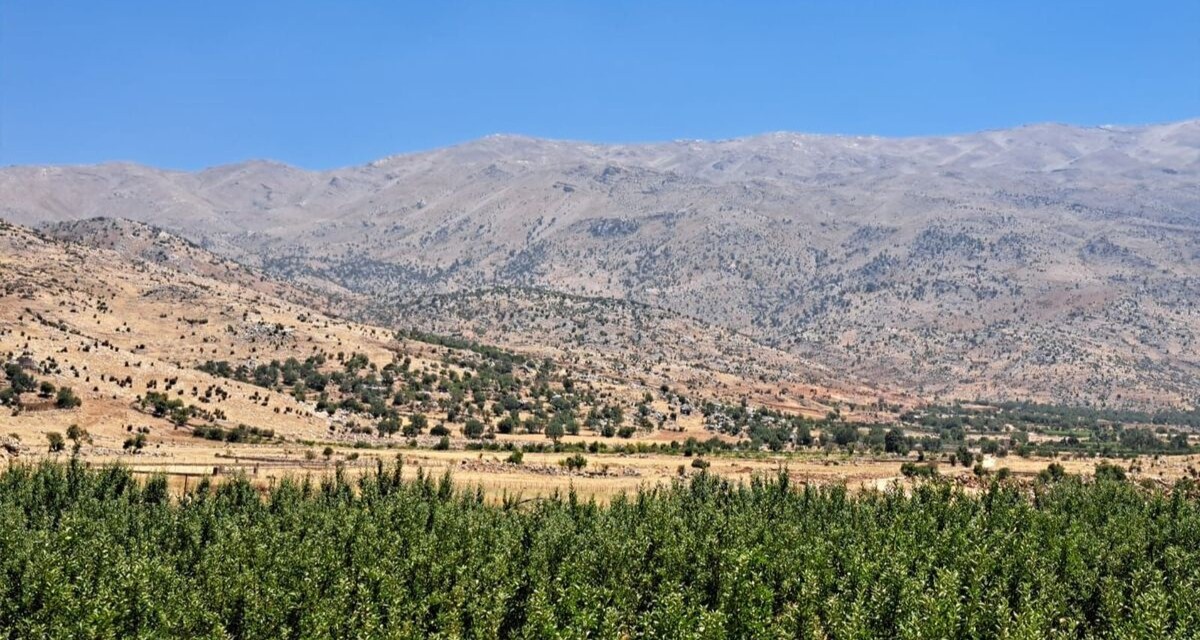
Back in Lebanon with BioConnect: Witnessing nature protection and socioecological resilience in action
As part of ETC-UMA’s role as the external evaluator for the EU-funded BioConnect project, the Centre’s Director, Dania Abdul Malak, carried out a site visit to Lebanon from July 8 to 12 to assess the project’s progress in its third ...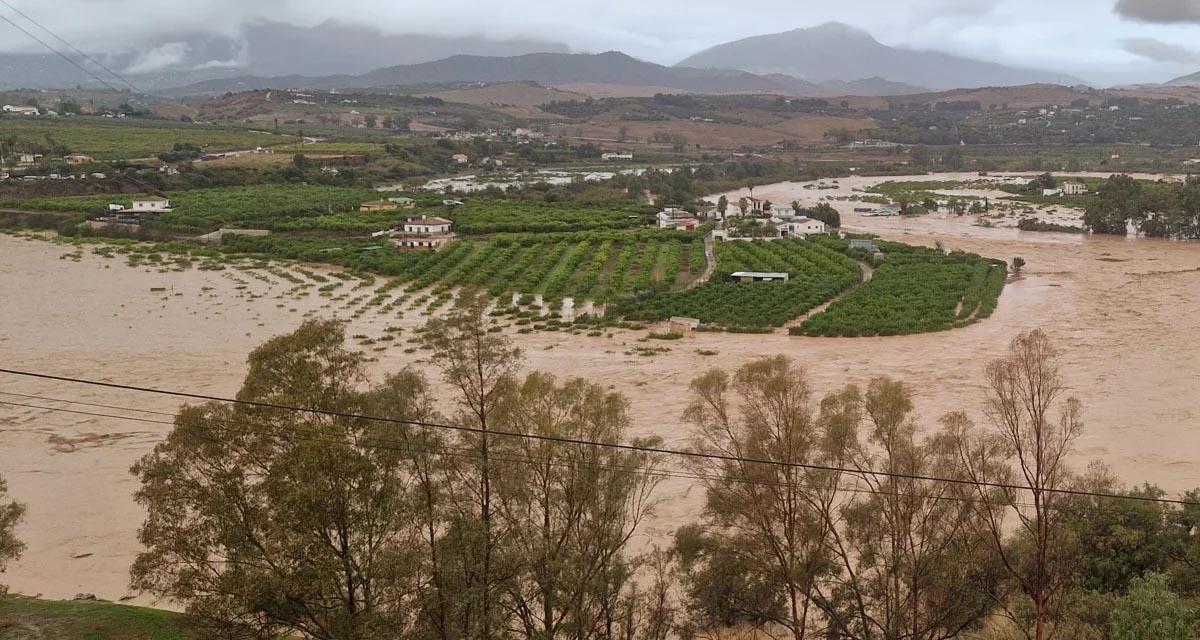
Boosting Climate Resilience: Wetland4Change Project Advances Flood Management Solutions for Mediterranean Coastal Zones
The Mediterranean coastal zone´s combination of multiple severe climate hazards – rising temperatures, water scarcity, sea-level rise, and extreme weather events – makes it a hotspot for highly interconnected climate risks for the ecosystems and societies. Recent catastrophic floods in ...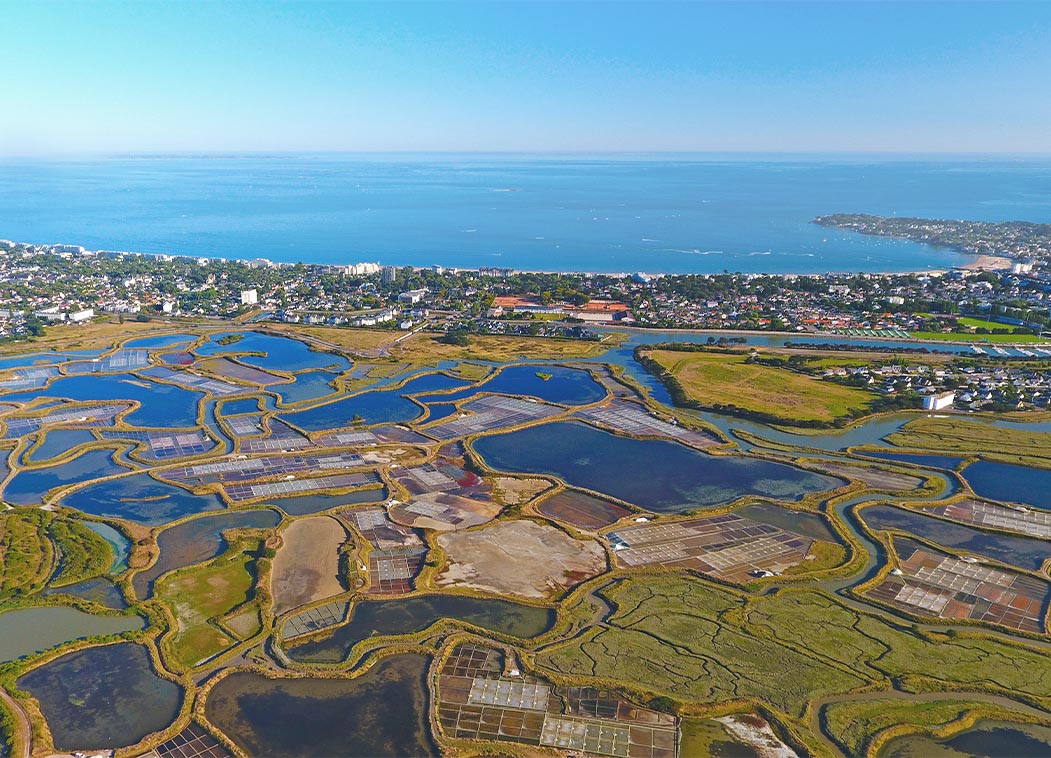
RESTORE4Cs 1st Policy Brief: How can coastal wetlands help achieve EU climate goals?
The first RESTORE4Cs Policy Brief of RESTORE4Cs, “How can coastal wetlands help achieve EU climate goals?“, highlights the importance of European coastal wetlands for reducing Greenhouse Gas emissions. The key messages of the first RESTORE4Cs Policy Brief include: Coastal wetlands are important natural carbon stores, ...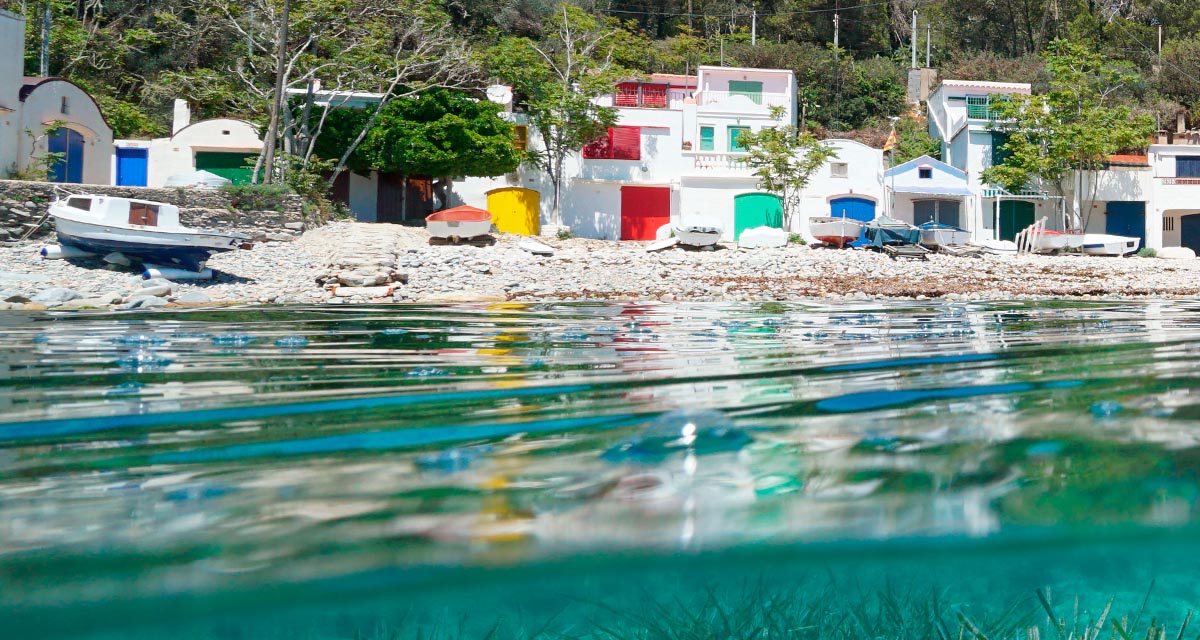
Mapping the Impact of Blue Tourism in the Mediterranean
The IUCN Centre for Mediterranean Cooperation with the support of ETC-UMA in the framework of the Blue Tourism Initiative, has released a comprehensive report entitled “Mapping the Impact of Blue Tourism in the Mediterranean: Vulnerability Assessment of Coastal and Marine ...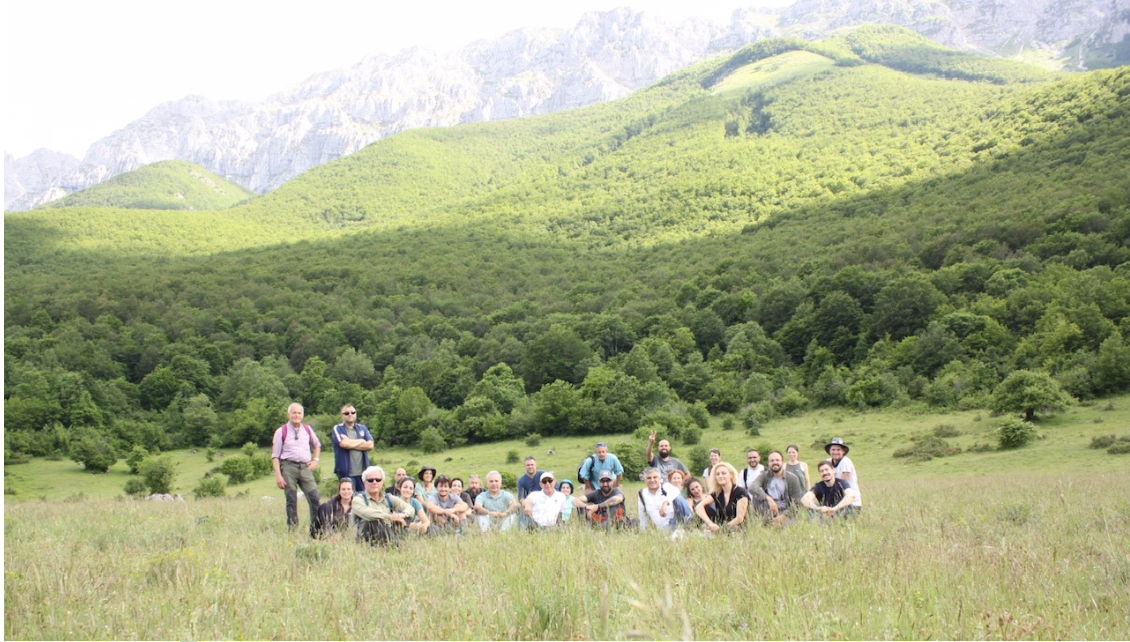
StrategyMedFor Presented at Annual Medforval Meeting 2024
StrategyMedFor was prominently featured at the Annual Medforval Meeting 2024, held from June 5-7 in Fontecchio, Italy. The event brought together 25 practitioners from national parks and natural reserves across 9 Mediterranean countries, providing a valuable platform for StrategyMedFor to ...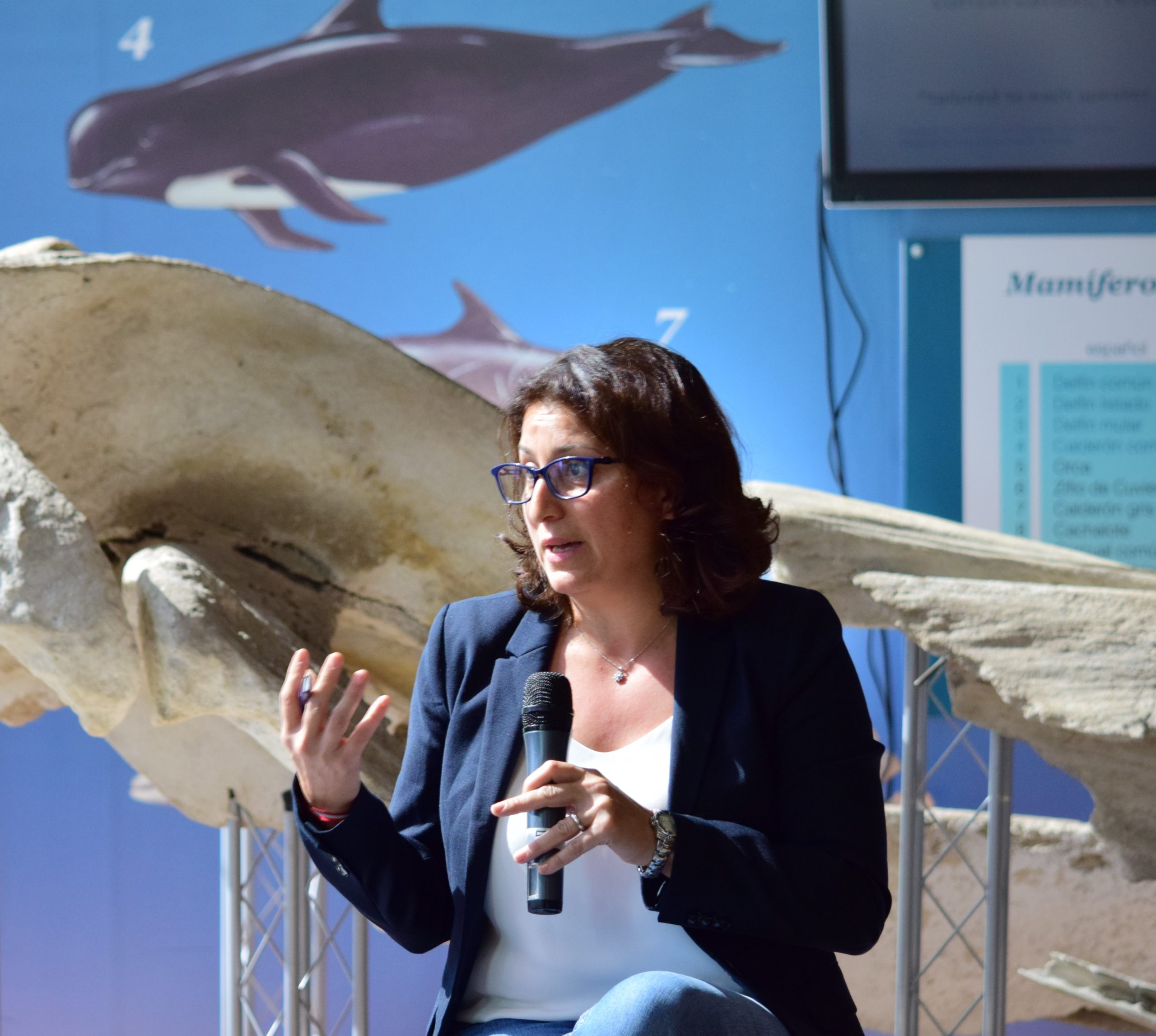
Celebrating leadership in environmental management: an interview with Dania Abdul Malak
From designing integrated ecosystem assessments in Europe and the Mediterranean to transforming outcomes into evidence-based recommendations for regional stakeholders, the European Topic Centre on Spatial Analysis and Synthesis (ETC-UMA) stands as a flagship for territorial cooperation. At the forefront of ...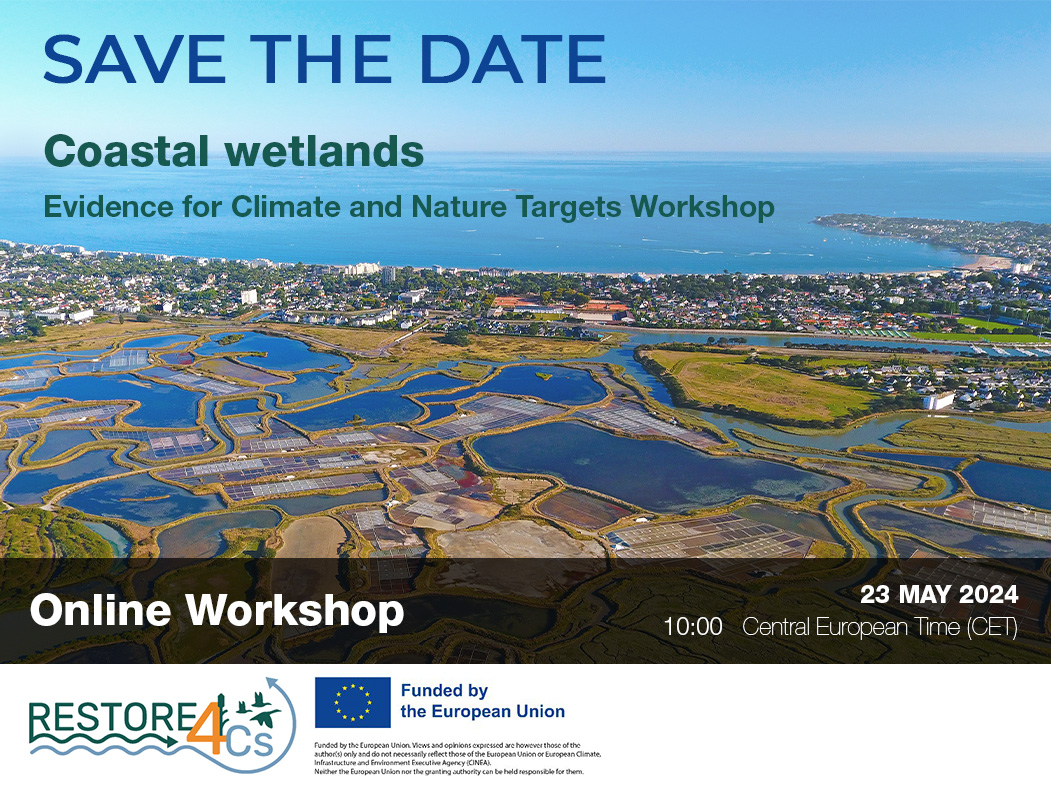
Save the date! Unlocking solutions for coastal conservation in Europe
How can coastal wetlands respond to major European Union objectives such as climate neutrality, biodiversity protection, and pollution reduction? What key role do coastal wetlands play in achieving EU commitments for climate mitigation and biodiversity conservation? The European Topic Centre ...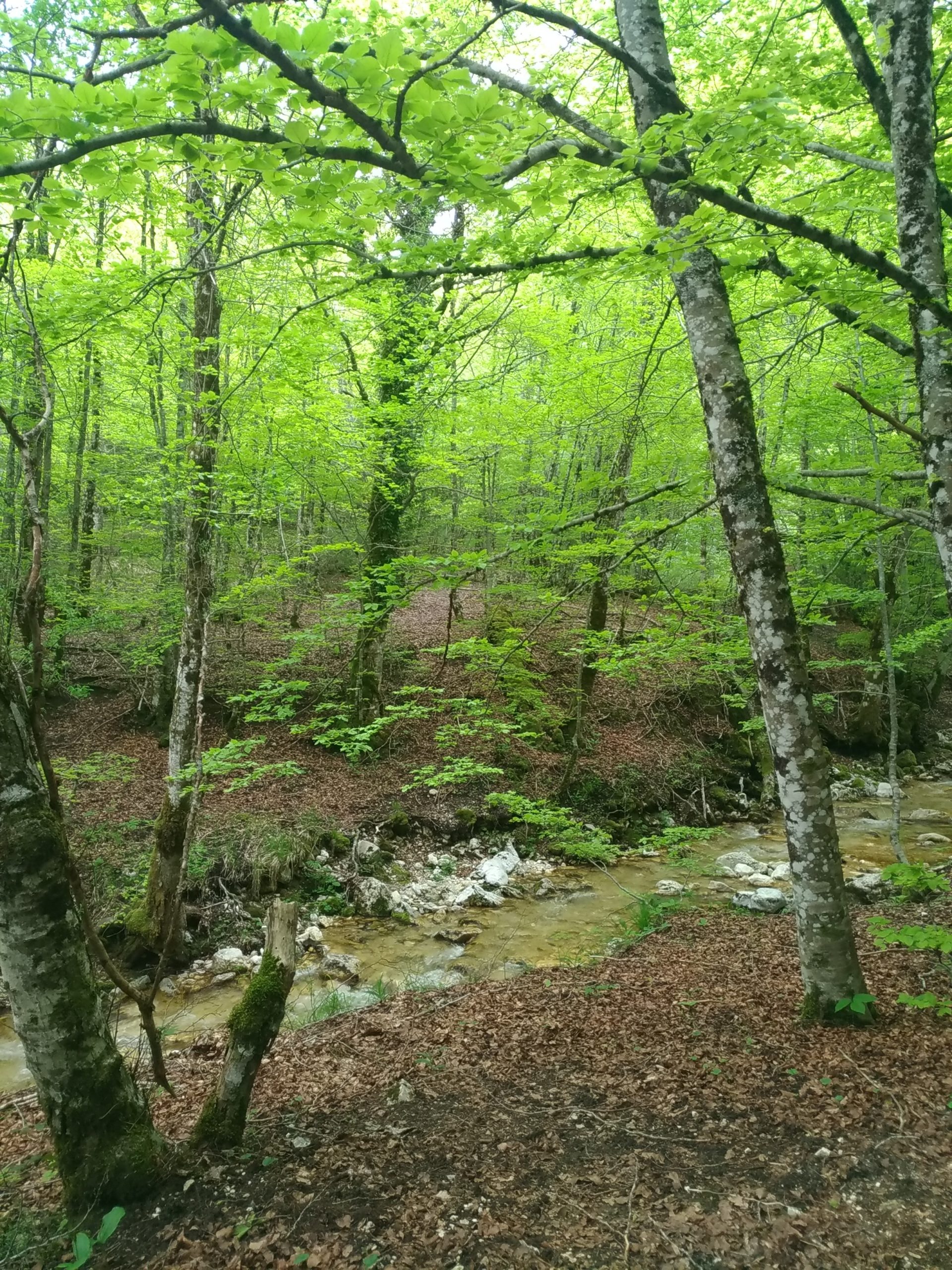
Towards a Strategy for the Sustainable Management of Mediterranean Forests (StrategyMedFor)
The StrategyMedFor project, co-financed by the Interreg Euro-MED programme, was launched at the University of Malaga during a two day meeting that took place on March 18 and 19, 2024. The European Topic Centre on Spatial Analysis and Synthesis (ETC-UMA), ...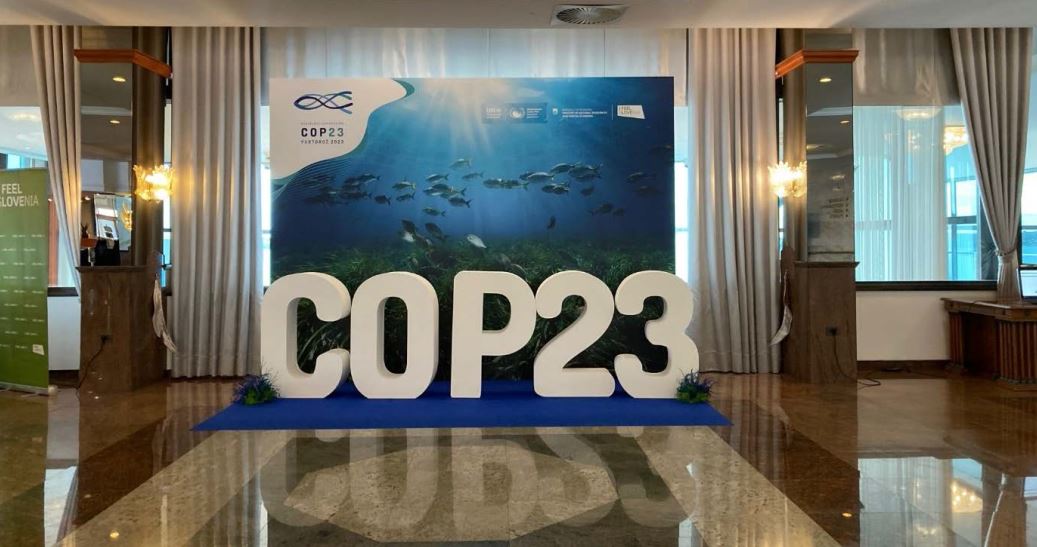
Collaborative science for forests by ETC-UMA showcased in Slovenia during the COP23
As UNEP MAP partner organization, ETC-UMA recently engaged in the organization of a session with Mediterranean institutions under the topic of climate change, entitled: From COASTAL to FOREST ecosystems: Mediterranean Nature-based Solutions to tackle climate change and ensure the Resilience ...
Tools for conserving the Spanish coast
On the initiative of the Instituto Universitario Hábitat Territorio y Digitalización (iHTD) of the University of Malaga, around 70 representatives of Spanish public administrations, researchers, architecture and environmental science players and civil society signed up to the second debate on ...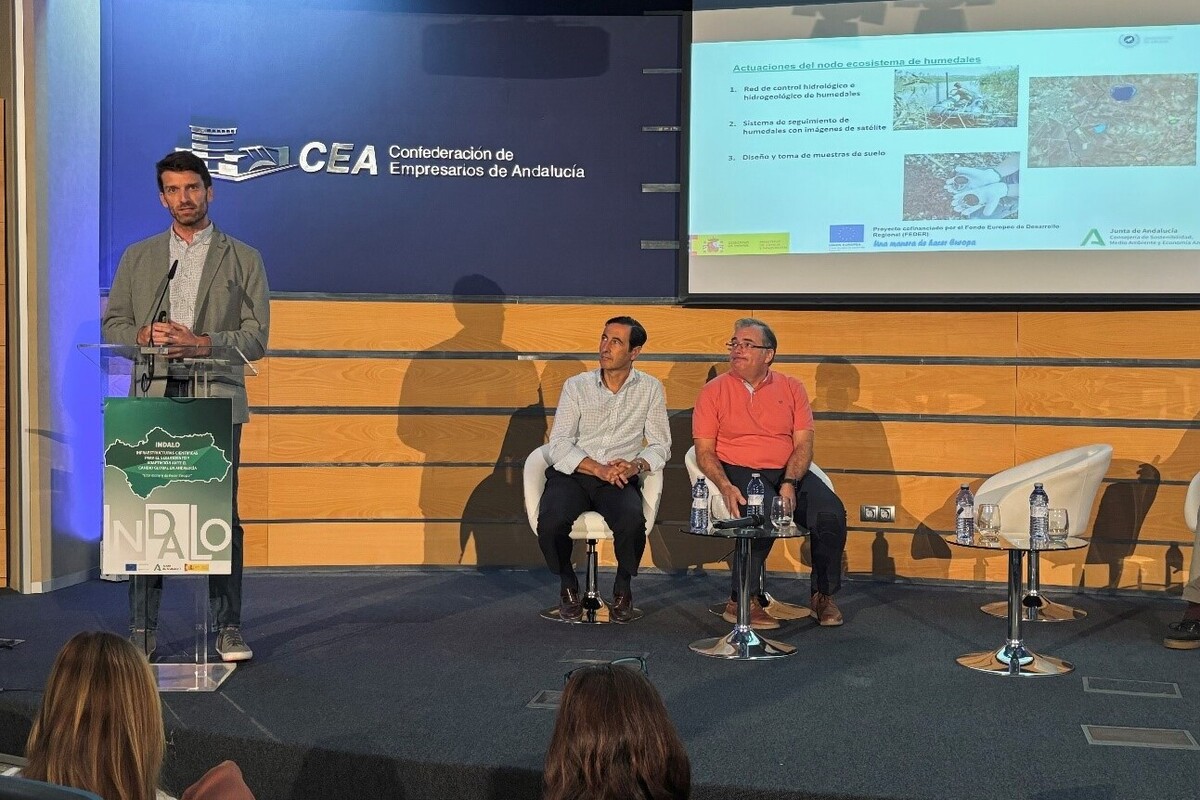
GreenEye System: a cloud-based system to monitor wetlands in Andalusia
Developed in the frame of the LifeWatch INDALO project cofinanced by the European Regional Development Fund (ERDF) for the study of biodiversity and global change in Andalucia, GreenEye System, this new cloud-based monitoring system, provides useful tools for wetlands’ assessment, ...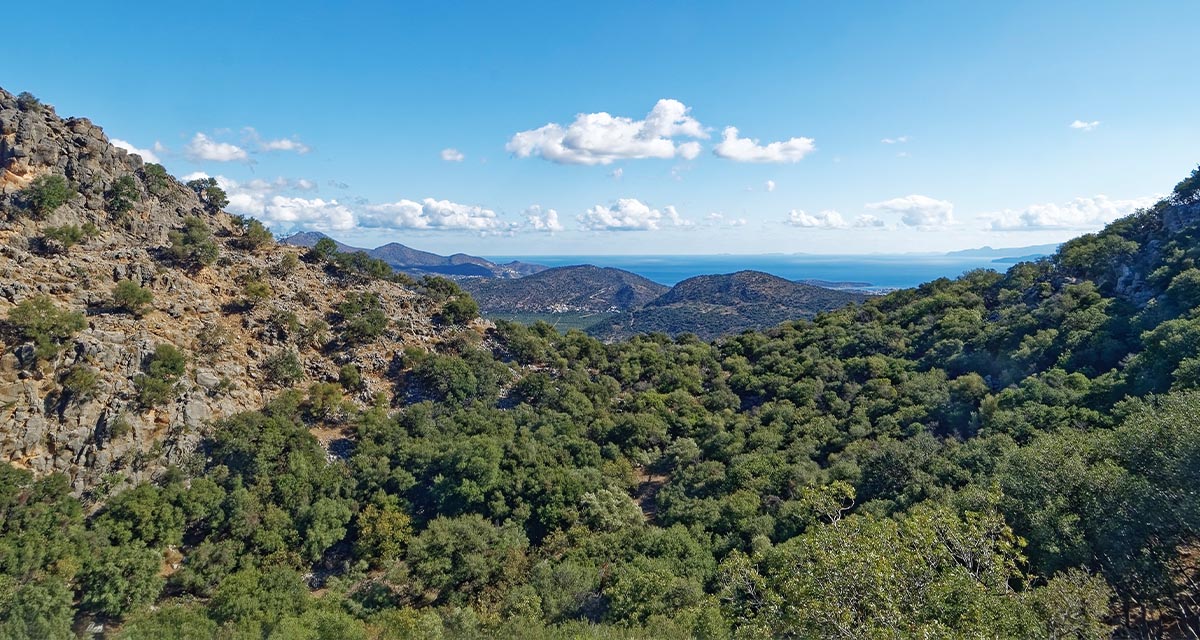
Looking back and forth to Mediterranean Forests
Timely published to enrich the knowledge available to fight fires and climate change challenges after an extremely hot summer, the proceedings of the Seventh Mediterranean Forest Week “Forest and Ecosystem Restoration for the next Mediterranean Generations” held from 21 to ...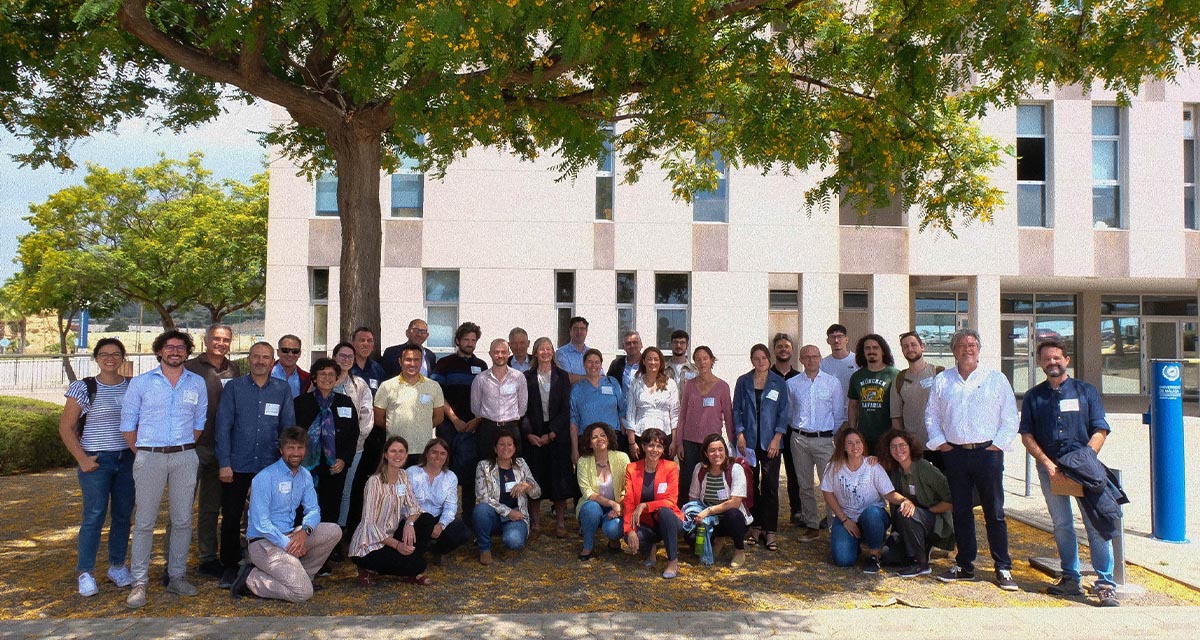
More space for innovative Mediterranean forest data partnerships
The report entitled A knowledge baseline on Mediterranean forests supported by innovation launched in July by ETC-UMA provides a highlight of what Mediterranean countries and institutions are doing to integrate new digital, satellite and Artificial Intelligence technologies into forest monitoring ...
The Earth from Space shown by ETC-UMA at FANTEC 2023
Students from 80 centers from all over Andalusia came together on Friday 19 May 2023 at the High School of Industrial Engineering of the University of Malaga to participate, one more year, in the Andalusian Technology Fair 2023. Antonio Sanchez ...